19 Best Books About Spain For Travelers in 2024 (All Genres)
Written by Nadia Podrabinek
Hello, my name is Nadia. I usually write about traveling (there are so many places to fit all the lifestyles), relocation, and living in a foreign country (adapting to a different culture). My travels stretch beyond Spain, with journeys to the US, Italy, Norway, Portugal, and France. Relocating to Spain in 2018, I lived in cities from Barcelona to Madrid, currently calling Valencia home. Follow me on Twitter, Facebook, Instagram, or LinkedIn! ... show more
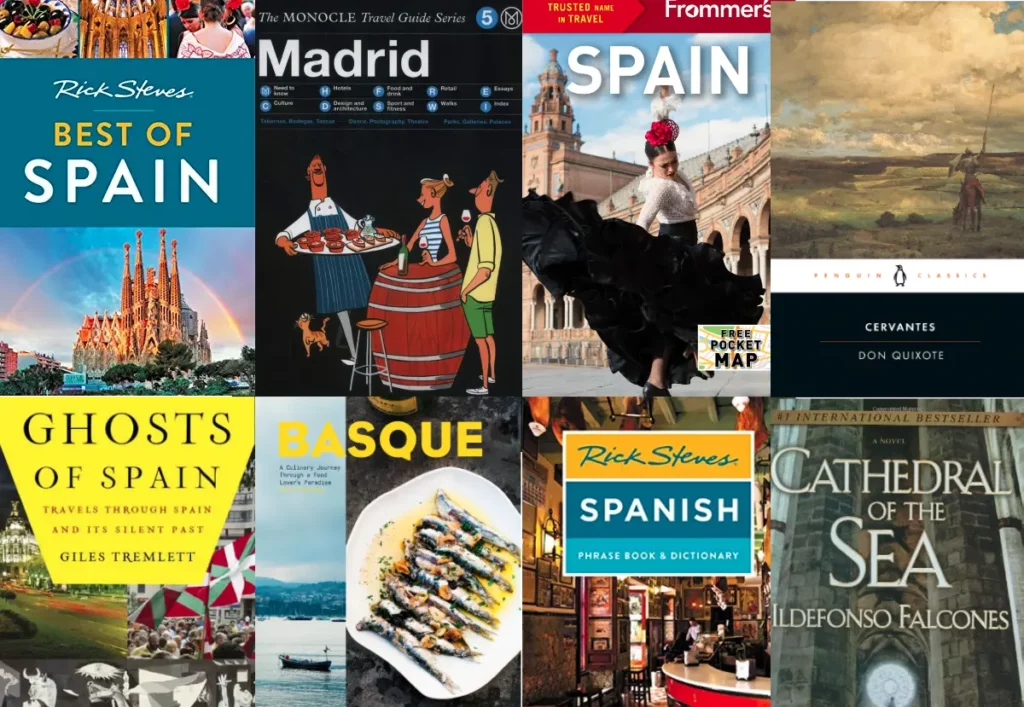
Exploring online book stores, buying, and delving into books about Spain, its history, and culture can be a never-ending journey.
But where do you start if you’re organizing a trip and wish to acquire at least a basic comprehension of this stunning country?
Here’s my selection of the top 19 books on Spain for any traveler, whether you are a first-time visitor or a seasoned guru.
Key takeaways
- Best Travel Guides: Rick Steves Best of Spain (click to scroll) and DK Eyewitness Spain (scroll)
- Best Food Guide: Basque Country: A Culinary Journey (scroll)
- Best History book: Spain: What Everyone Needs to Know (scroll)
- Best Biography: Franco (scroll)
- Learning Spanish: Rick Steves Spanish Phrase Book & Dictionary (scroll)
1. Rick Steves Best of Spain
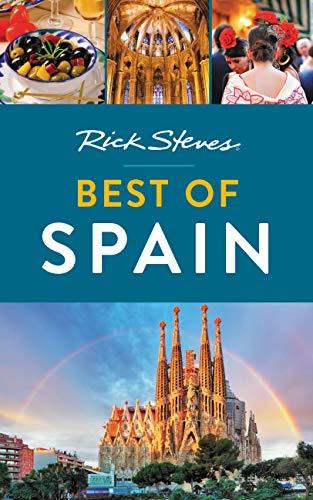
479 pages, Kindle Edition/Paperback First published March 29, 2016
Rick Steves Best of Spain offers strategic advice on making the most of your time and money while visiting the country. The book provides short itineraries covering top destinations like Barcelona, Madrid, Toledo, Granada, Andalucía’s White Hill Towns, and Sevilla.
It includes tips for avoiding tourist traps, experiencing local culture, and planning your trip effectively. With over 400 full-color pages featuring detailed maps and vibrant photos, the book also suggests side trips to various locations.
I find the book particularly useful for practical information on “must-see” places like the Alhambra and La Sagrada Familia to secure tickets and make the most of my visits to Granada and Barcelona.
Read also: Best Beach Reads of All Time
2. Lonely Planet Spain
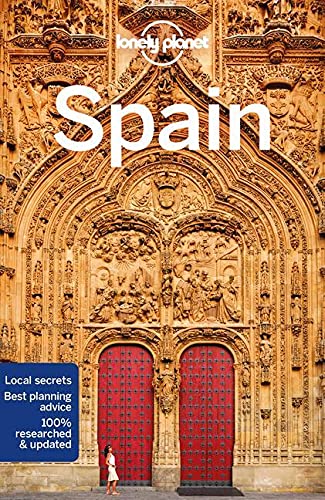
928 pages, Kindle Edition/Paperback First published October 19, 2021
If you are looking for less opinionated travel guide (compared to Rick Steves Spain), Lonely Planet Spain is a solid choice.
It is a thorough guide on Spain offering full-color maps and images, insider tips, essential information, and honest reviews for various budgets. The guide covers a wide range of destinations and attractions, though it does not include the islands.
It is best suited for exploring top sights and taking lesser-known routes. However, the guide lacks details on avoiding queues and train travel, requiring readers to consult other sources for that information.
The Kindle edition has some formatting issues, making it hard to follow and visually unappealing. While the links to websites work well and are helpful, the links to Google Maps often malfunction.
Despite these issues, the reader I think this book is pretty useful for planning an extended trip, while planning to consult a second guidebook like Rick Steves’ for more specific information.
See also: Lonely Planet Experience Barcelona & Experience Andalucia
3. Madrid: The Monocle Travel Guide
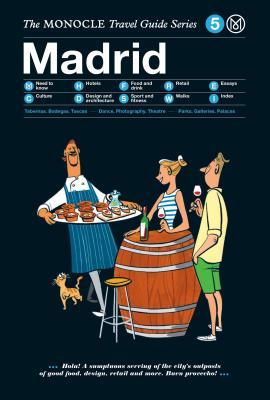
148 pages, Hardcover First published October 25, 2015
“Madrid: The Monocle Travel Guide” showcases a city where tradition and modernity coexist, offering hidden gems and unique experiences. Unlike typical travel guides, this book focuses on a lifestyle approach, blending classic and contemporary elements for those who want to feel like locals.
The Monocle Travel Guide Series is known for its deep understanding of cities and contains essays and perspectives in addition to recommended places. I didn’t like the binding of the book (which is not very durable), and it also offers limited information about the city itself.
Overall, i you appreciate beautiful photographs and have luxurious tastes, this guidebook could be a great choice because it even surprises locals with its discoveries.
Read also: 25 Fun and Quirky Facts about Spain
4. Basque Country: A Culinary Journey Through a Food Lover’s Paradise
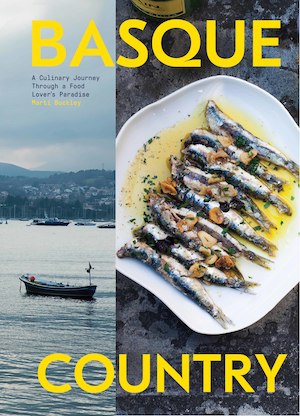
320 pages, Hardcover First published September 11, 2018
“Basque Country: A Culinary Journey Through a Food Lover’s Paradise” is a unique exploration of the culinary world of Spain’s northwest corner. This region boasts the highest concentration of Michelin-starred restaurants per capita in the world and is known for its soulful cuisine.
The book, written by American chef and journalist Marti Buckley, combines ingredient-driven recipes with stories of Basque customs, culture, and the local kitchen, accompanied by vivid photographs.
Also, it is more than just a collection of recipes; it offers valuable insights into the Basque lifestyle, culture, and history, making it an enjoyable one-time read for foodies planning to visit the region.
Overall, a great addition to any cookbook collection, especially for those who want to immerse themselves in the authentic Basque experience or to evoke the feeling of being there. 🙂
5. DK Eyewitness Travel Guide: Spain
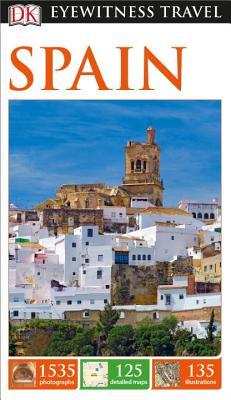
672 pages, Paperback First published April 1, 1989
The “DK Eyewitness Travel Guide: Spain” is an indispensable guide to Spain, covering everything from Madrid to the Moorish cities of the south. It includes detailed itineraries, 3-D drawings of important sights, museum floor plans, guided walking tours, dining recommendations, and maps for easy navigation.
Dorling Kindersley (DK) is a British publishing company known for creating highly visual, illustrated reference books and guides. Founded in 1974 by Christopher Dorling and Peter Kindersley, the company specializes in producing books for a wide range of topics, including travel, history, science, nature, sports, and hobbies.
As a reader, I appreciated the historical insights and the full-color photographs, hand-drawn illustrations, and custom maps that brought Spain to life. The Spanish art section is also quite interesting, highlighting influential painters such as Diego de Velazquez and discussed various art forms like religious art and modern art.
Overall, the book provides readers with a comprehensive understanding of Spain, its history, and its culture, what else can you want from a decent travel guide?
6. Frommer’s Spain (Complete Guide)
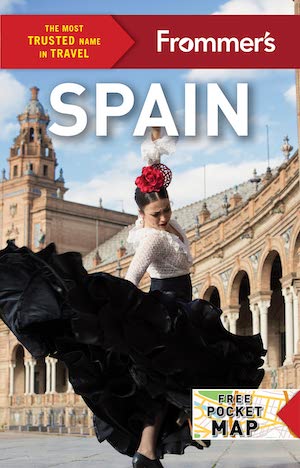
640 pages, Paperback
“Frommer’s Spain (Complete Guide)” is another complete guide offering practical advice and insider tips on how to experience Spain like a local.
The suggested itineraries are particularly helpful in planning the trip, allowing you to explore Madrid, Barcelona, and other destinations logically and in style. The book introduces you to lesser-known attractions, such as the modernist hospital in Barcelona and free Gaudí walking tours with Runner Bean Tours.
Additionally, the guide’s restaurant recommendations did not disappoint, leading to some of the best dining experiences you can ever have. The book also provides valuable tips for visiting popular attractions like the Prado Museum or shopping in Barcelona. All in all, highly recommended.
7. Rick Steves’ Spanish Phrase Book & Dictionary
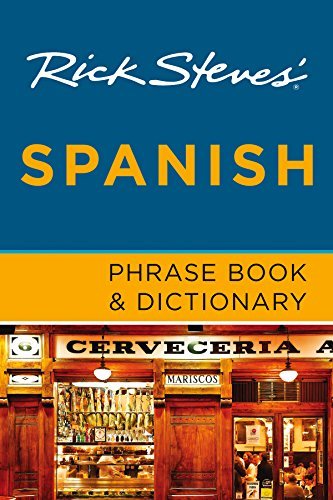
753 pages, Kindle Edition First published March 7, 2017
“Rick Steves’ Spanish Phrase Book & Dictionary” is a compact and practical guide for travelers to Spain, offering useful phrases and key words for various situations.
The book includes phonetic spelling, an English-Spanish and Spanish-English dictionary, and up-to-date information on currency and rail transportation.
The book rivals the Lonely Planet phrasebook, which may cater more to a younger audience with some less relevant phrases for certain travelers. Comparing the two guides will help you choose the best one for your needs.
8. Tales of the Alhambra
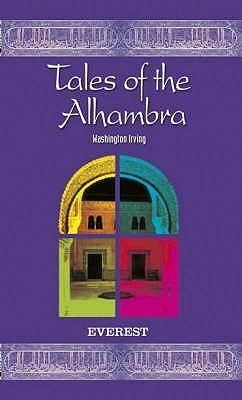
348 pages, Paperback
“Tales of the Alhambra” is a collection of essays, verbal sketches, and stories by Washington Irving, inspired by his visit to Granada, Spain in the 1820s.
The book played a significant role in reviving interest in the Alhambra Palace and its history.
Interestingly, Irving’s account is both a blessing and a curse; while it led to the palace’s restoration and maintenance, it also marked the beginning of the tourist age and commercialization of such monuments.
You might also feel envious of Irving’s experience, as he had the entire palace to himself for a month, whereas modern visitors must share the experience with thousands of tourists.
Despite this, I believe a visit to the Alhambra is incomplete without reading Irving’s book and retracing his steps through the gardens and other key locations.
9. The Food of Spain
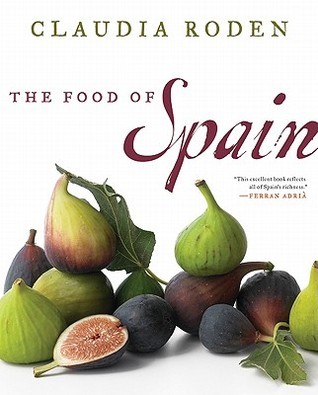
609 pages, Hardcover First published June 1, 2011
“The Food of Spain” by Claudia Roden is a definitive cookbook on Spanish cuisine that combines fascinating history, stunning full-color photographs by Jason Lowe, and a diverse range of recipes influenced by various cultures.
I recommend getting the large hardcover edition, as the beautiful photos truly capture the essence of Spain and its dishes. The book explores the many influences on Spanish cuisine, such as Arabian, Macedonian, Middle Eastern, American, Greek, Italian, French, and North African culinary traditions. Some of the standout recipes include Béchamel made with sherry and tomato, Moorish-style eggplants with honey, fideos (pasta) cooked like rice in stock, Spanish polenta, coca with roasted peppers and eggplants, and Catalonian pollo con langostinos.
Overall, an insanely valuable material for anyone interested in the Spanish cuisine.
10. The Ornament of the World: How Muslims, Jews and Christians Created a Culture of Tolerance in Medieval Spain
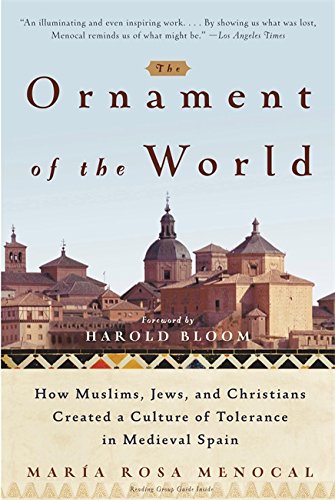
352 pages, Paperback First published May 2, 2002
The book author, María Menocal, debunks the idea of the Middle Ages as a time of religious persecution and intellectual stagnation, presenting an image of a tolerant and culturally rich medieval society.
The book follows the story of al-Andalus, an Islamic kingdom on the Iberian peninsula, where Muslim, Jewish, and Christian cultures flourished and significantly influenced the rest of Europe.
To me, it is more of a series of historical portraits of Spain from the 6th to 15th centuries, showing the unusual coexistence of people of different faiths. The book is not a comprehensive history of medieval Spain but instead focuses on individuals, buildings, and stories that exemplify the unique cultural fusion.
I really like to learn about specific details, such as the poetic upheaval in Cordoba after its fall in the 11th century and the possible influence of this poetry on the European minstrel tradition. Also, it looks like the famous Don Quixote can be seen as a story of Muslims and Jews hiding their true beliefs to stay on their land.
11. The Battle for Spain
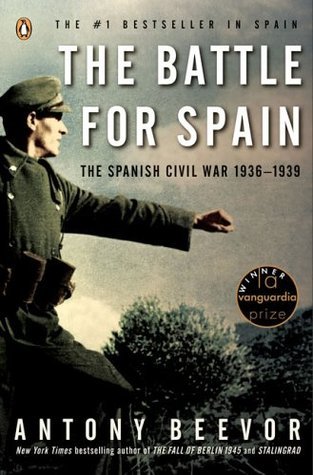
560 pages, Paperback First published June 1, 2006
“The Battle for Spain: The Spanish Civil War 1936-1939” by Antony Beevor is an acclaimed account of the Spanish Civil War, providing a balanced and penetrating perspective on the conflict’s causes, course, and consequences. The book is well-structured with maps and an overview of the main parties involved, making it accessible for readers unfamiliar with the subject matter.
I had limited knowledge of the Spanish Civil War before reading this book but found it to be the perfect introduction. The narrative is engaging and not overly detailed, offering enough insight and eyewitness accounts to help me piece together events and actions. The wealth of source information, along with the bibliography, added to the book’s credibility.
Reading this book, I gained a real feel for the Spanish Civil War and its human aspects, including the clash of beliefs, ferocity, and bravery of those who fought. The book receives a clear 5 stars from me and comes highly recommended.
12. Homage to Catalonia
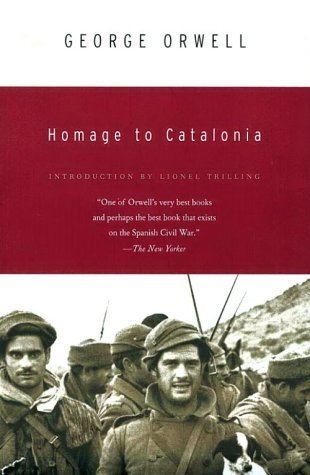
232 pages, Paperback First published April 25, 1938
“Homage to Catalonia” by George Orwell is the author’s account of his experiences fighting against Fascism during the Spanish Civil War.
It is hard to comprehend Orwell’s commitment to fighting for a lost cause due to his belief in human decency inspiring, despite the war’s challenges and the dishonest propaganda surrounding it. His dedication to doing the right thing, even when faced with frustration and aggression, resonates with my own idealism as a teacher.
Still, Orwell’s portrayal of the human condition amidst the chaos of war showcases both the best and worst of humanity, including bravery, cowardice, hatred, and love.
Reading this book helps to reveal the underlying love for humankind present in Orwell’s other works, such as “1984,” “Animal Farm,” and his essays on nationalism. Overall, I highly recommend “Homage to Catalonia” for its valuable insight into the mindset of an idealist and the human experiences within political turmoil in the setting of Spain.
13. Ghosts of Spain: Travels Through Spain and its Silent Past
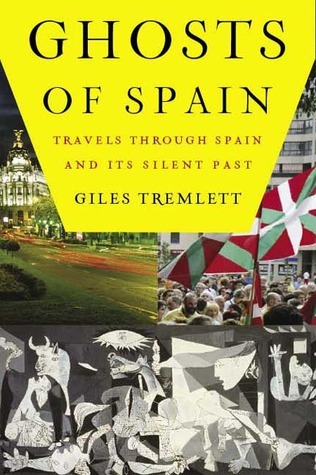
400 pages, Hardcover First published February 6, 2007
This book explores the country’s history and the reasons behind Spaniards’ reluctance to discuss their painful past. The narrative delves into big topics, such as the Spanish Civil War, Basque terrorism, and the 2004 Islamist bombings, while also offering insights into everyday Spanish life.
As a reader, I found this book to be an interesting examination of a society that has transitioned from a semi-fascist dictatorship to a liberal democracy in a short period (which is a rare occasion). I think, the leadership of King Juan Carlos and the practice of leaving the past behind played significant roles in this transformation.
14. Expats in Spain
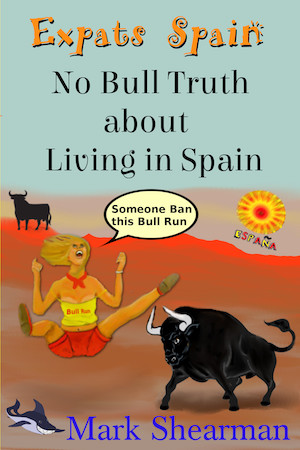
110 pages First published November 10, 2015
“Expats in Spain” by Mark Shearman is a must-read for anyone considering moving to Spain, providing insights into various aspects of expat life. I found it to be a truthful and humorous take from someone who has experienced living in Spain firsthand (as I myself have been living for more than 5 years in Spain now).
Read another book on the expats topic: Successfully Moving to Spain: A step-by-step Guide to Immigration, Becoming a Resident, and happily Living in Spain from outside of the EU (Post-Brexit)
15. Don Quixote

1023 pages, Paperback First published January 1, 1605 😳
“Don Quixote” by Miguel de Cervantes is a classic novel that follows the adventures of a man who becomes so obsessed with chivalric romances that he decides to become a knight-errant himself, accompanied by his squire, Sancho Panza.
This set of episodic tales is a delightful and hilarious parody of chivalry novels, which were popular in Spain between 1300 and 1600.
The novel also serves as an honest social critique during a period of crisis for Spanish power. Cervantes’ own eventful life, including his injury at the Battle of Lepanto and his imprisonment in Algiers, may have contributed to the tender irony and fundamental kindness in his characters.
Overall, the book’s modernity and profound humanity make it an unforgettable masterpiece. The Portuguese translator, Aquilino Ribeiro, also deserves praise for his outstanding work.
16. The Sun Also Rises
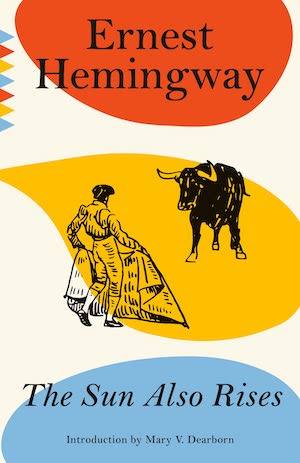
189 pages, Paperback
“The Sun Also Rises” by Ernest Hemingway is a tragic love story and a portrait of American expatriates in postwar Europe. The novel, published in 1926, follows the disillusioned Jake Barnes and the flamboyant Lady Brett Ashley through the nightlife of 1920s Paris and the bullfighting arenas of Spain (in Pamplona, to be exact).
Lady Brett Ashley is a tragic figure, trying to fill the void left by the war with alcohol and sex, ultimately destroying herself. During my first reading, I was drawn to Brett, but upon rereading, I found Jake to be the real standout character. He is the only one not lost among the “Lost Generation,” coming to terms with the fact that a relationship with Brett would be as doomed as her other conquests.
The novel also offers a poignant look at the post-World War I generation and showcases Hemingway’s powerful writing style.
TL;DR: This might become one of your all-time favorite books by Hemingway.
17. Cathedral of the Sea
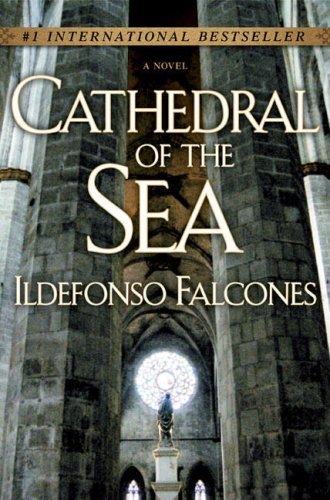
611 pages, Hardcover First published March 1, 2006
“Cathedral of the Sea” by Ildefonso Falcones is a captivating Spanish novel set in 14th-century Barcelona, centering on the construction of the largest Maria cathedral ever known. As a reader, I discovered this beauty through a Goodreads’ review, and it quickly became one of my favorite Spanish novels.
The story, reminiscent of “Pillars of the Earth,” follows Arnau, a peasant who escapes serfdom and rises to nobility amidst intrigue and danger. Although some parts might be a bit graphic, the book is well-researched and the author provides fascinating historical context.
If you enjoy medieval historical fiction, “Cathedral of the Sea” is a beautiful and compelling read.
18. Franco: A Biography
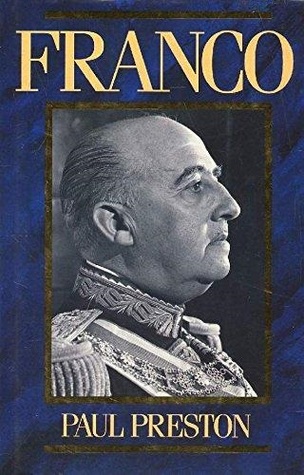
1024 pages, Paperback First published January 1, 1993
“Franco: A Biography” by Paul Preston is a well-researched and detailed look into the life of Francisco Franco, the controversial Spanish dictator who dominated the country’s politics for much of the 20th century. As a non-native, you will be surprised to learn about Spain’s fascist dictatorship, which lasted into the 1970s! The book highlights the cost of the Spanish Civil War, Franco’s manipulative actions during World War II, and his accumulation of power. It also sheds light on the support he received from the Vatican and the balance of power between the fascist Falangist movement and the royalist Carlist faction.
Although some reviewers perceive the author’s stance as anti-Franco, the book seems to be objective and fact-driven, presenting a comprehensive portrayal of Franco’s life and impact on Spanish history.
Yes, the book can be lengthy and heavy on details, but it is educational and informative for those interested in understanding this shadowy figure.
19. Spain: What Everyone Needs to Know
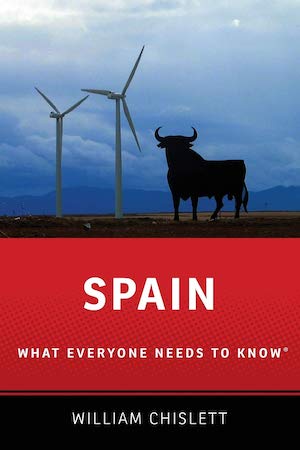
256 pages, Paperback First published January 1, 2013
“Spain: What Everyone Needs to Know” by William Chislett is a densely packed overview of Spain’s political and historical context, providing valuable insights into the country’s current economic and political challenges.
This book is highly recommended for anyone interested in understanding the real Spain, beyond stereotypes and folklore. The author presents a concise, question-and-answer format, covering topics from Spain’s Muslim presence to its modern-day struggles.
The book also addresses Spain’s fight for modernity against powerful internal forces, such as the Catholic Church. Reading this work by a contemporary foreign author offers a balanced perspective on Spain’s landscape, making it an excellent resource for both foreigners and the Spanish people.
